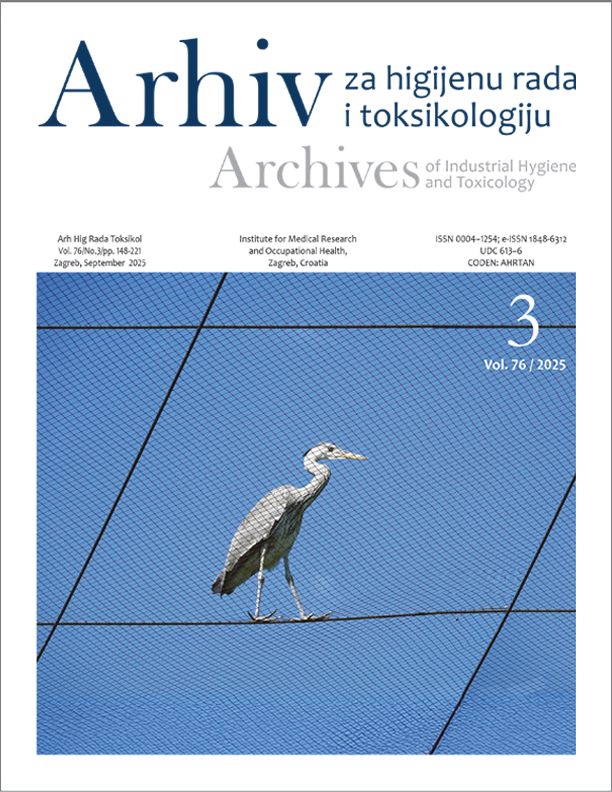Effects of N‐alkyl quaternary quinuclidines on oxidative stress biomarkers in SH-SY5Y cells
DOI:
https://doi.org/10.2478/aiht-2025-76-4007Keywords:
DNA damage, glutathione, mitochondrial dysfunction, oximes, reactive nitrogen species, reactive oxygen species, superoxide dismutaseAbstract
Having a broad spectrum of biological and pharmacological activities, including anticholinergic, antihistaminic, antiparasitic, antioxidant, and antitumour, quinuclidine derivatives have piqued much interest in the field of drug discovery and biomedical research. This study investigates the oxidative stress effects of six N‐alkyl quaternary quinuclidine derivatives, namely three oximes (QNOH-C12,14,16) and three alcohols (QOH-C12,14,16) in SH-SY5Y neuroblastoma cells to evaluate their safety profile as potential therapeutics. We treated SH-SY5Y cells with their lowest-observed-adverse-effect levels (LOAEL) for 4 h and measured reactive oxygen/nitrogen species (ROS/RNS), lipid peroxidation, glutathione (GSH), superoxide dismutase (SOD) activity, and DNA damage. Q(N)OHs significantly increased ROS and RNS levels, particularly the QNOHs, while lipid peroxidation remained unaffected, and GSH depletion was minimal. Cytosolic Cu/Zn-SOD activity increased significantly with longer alkyl chain substituents, while Mn-SOD activity decreased, indicating mitochondrial damage. DNA damage was not elevated. The observed effects of the tested quinuclidine derivatives appear to depend on their structural properties, as compounds containing hydroxyl groups and shorter alkyl chains had a lower impact. Furthermore, even non-cytotoxic doses of the tested compounds affected cell homeostasis, which underlines the importance of such testing early in the evaluation of new potential drugs.
Downloads
Published
Issue
Section
License
Copyright (c) 2025 Antonio Zandona, Lucija Marcelić, Suzana Žunec, Josip Madunić, Maja Katalinić

This work is licensed under a Creative Commons Attribution 4.0 International License.














